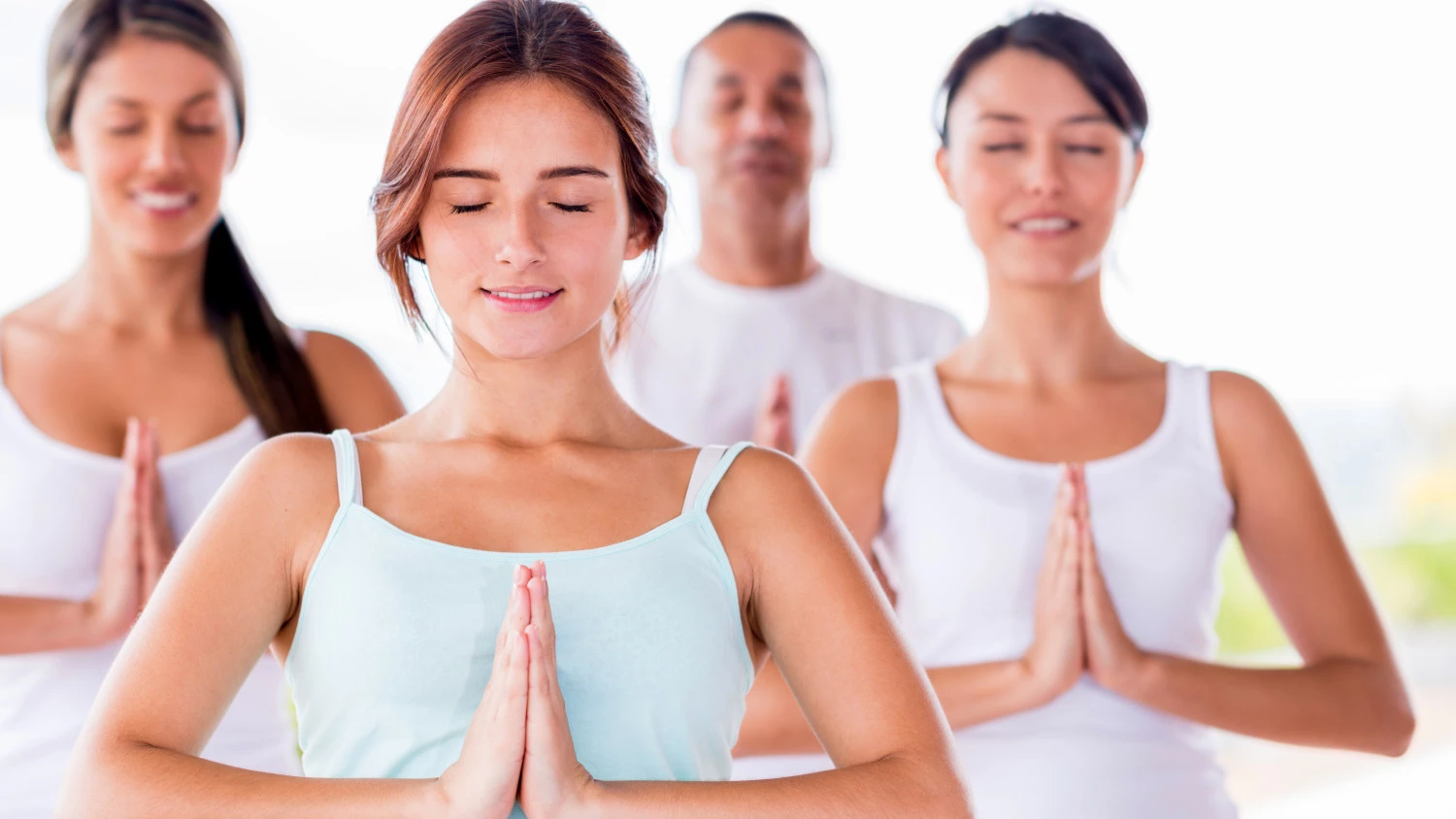Yoga and the 3 Gunas: Sequencing for Sattva

We usually think of sequencing of yoga postures in terms of warming up the muscles and preparing for more challenging postures. However, sequencing principles go much deeper than that.
The sequence of a yoga class has the potential to contribute to specific states of mind and feelings in the body for the yoga practitioner. At the end of class the yoga student might feel high as a kite, ready to take a nap, or wanting to sit under a tree in stillness for the rest of the afternoon.
Usually, we don’t incorporate considerations for creating a specific mental effect when sequencing a yoga class. But if you have you ever thought about sequencing a class to get a desired effect, here’s one way of sequencing you can try in your own practice or with your yoga students.
Yoga and the 3 Gunas: Sequencing for Sattva
In yoga and Ayurveda there are 3 gunas, or qualities: sattva, rajas, and tamas. Tamas is associated with feelings of lethargy, heaviness, and inertia. If you wake up groggy and tired in the morning, it’s usually a sign that tamas is dominating after a long night of inactivity.
Rajas can be described as feelings of excitement, being energized and full of activity, but also often a certain degree of restlessness and mental agitation. Sattva is a third quality and it corresponds to feeling expansiveness, joyfulness, lightness, and being the witness to your life. There is a feeling of being the observer and full of joy for no particular reason, all at the same time.
The original intention of yoga, according to the Yoga Sutras of Patanjali, was to enhance the quality of Sattva (a calm yet alert state of mind). If the student goes into Sattva on a daily basis over many weeks and months, transformation of his or her life happens naturally. The student begins to carry that Sattva into his or her life.
According to Patanjali, one major goal of yoga is to change from Vyuthana Samskara to Nirodaha Samskara. Vyuthana Samskara is a contraction in the body, agitation in the mind, or stress in the emotions. Nirodaha Samskara means one feels stable, comfortable, focused, alert, and ultimately has good health. The Yoga Sutras say that one goal of yoga is to bring all five layers of the Panchamaya system into Nirodaha Samskara.
When the Nirodaha Samskara is used as the foundational principle for our asana practice, the practice will definitely change. How can we as teachers help someone go from Vyuthana Samskara (contracted, agitated and stressed) towards Nirodaha Samskara (comfortable, focused and alert) within an asana class?
This is the million-dollar question and especially difficult to accomplish among many diverse human beings. Yoga teachers face the challenge of recognizing and lifting depressed individuals out of darkness as well as calming down hyperactive practitioners to achieve Nirodaha Samskara. If yoga practitioners follow five steps in a practice, it is very likely that we will move from the Vyuthana Samskara to Nirodaha Samskara, or at least a little closer to Nirodhaha than when we started.
This is where sequencing can make a difference. In order to experience a well-rounded and holistic yoga practice, one possible sattva-inducing sequence includes the five categories of asanas in a particular order:
1. Sun Salutations: Sun Salutations followed by standing poses create rajas, movement and heat, which melts away stress. Sun Salutations warm-up every major joint and muscle in the body. There are many variations for people who are not able to do classical versions of Surya Namaskara A, B or C. They can be done sitting in a chair, kneeling on the floor and modified from standing. Sun- salutations help to discharge any agitation or anxiety (rajas quality).
2. Standing Poses: Following Sun Salutations, standing yoga poses bring strength, confidence and vigor to the body by releasing anxiety and tension. Standing balancing poses are done at the end of the standing sequence. Standing poses help to promote attention of the mind.
3. Supine and Prone Yoga Poses: Lying down poses begin with a rest lying in supine position. This provides a check-in with the body, breath and mind. Lying-down poses include any asana in supine, inverted and prone postures. After the discharge of rajas in the Sun Salutations and standing poses, body and mind begin to settle down in the supine and prone poses.
4. Seated Poses and Pranayama: The seated postures are often done statically and are great for opening the hips and low back in preparation for sitting for pranayama and meditation. Seated poses help to focus inward and prepare the mind for seated pranayama. Pranayama cleans the nadis and settles the mind for meditation. This can be done seated in a chair if one is uncomfortable on the floor. Now the yoga practitioner is moving closer to a sattvic state of mind and body.
5. Meditation: Meditation, or dhyana, is the final step of the practice. This is where the mind comes into a one-pointed focus. In the yoga tradition, one becomes naturally absorbed and eased into deep meditation if the previous steps were successful. Sattva quality is dominant during this phase of the sequence.
I have a challenge for you long-time yoga teachers and students. Try this new way of sequencing and see what happens. Open up to a new way of being and teaching. Talk to your students about the importance of getting into a Sattva mind both on the mat and then carrying the Sattva into life.
 Amy Wheeler, Ph.D. is a Professor of Kinesiology at California State University, San Bernardino for 16 years. Amy’s degrees include a B.A. and M.A. in Health Promotion and a Ph.D. in Education and Psychology. Amy is helping to set standards for Yoga Therapist in organizations such as NAMA (National Ayurvedic Medical Association). Amy also founded the Healing Yoga Institute in 2007 and continues to train yoga teachers and yoga therapists at the 200, 300, 500 and 800-hour levels. Amy is on the Board of Directors for the International Association of Yoga Therapist (IAYT).
Amy Wheeler, Ph.D. is a Professor of Kinesiology at California State University, San Bernardino for 16 years. Amy’s degrees include a B.A. and M.A. in Health Promotion and a Ph.D. in Education and Psychology. Amy is helping to set standards for Yoga Therapist in organizations such as NAMA (National Ayurvedic Medical Association). Amy also founded the Healing Yoga Institute in 2007 and continues to train yoga teachers and yoga therapists at the 200, 300, 500 and 800-hour levels. Amy is on the Board of Directors for the International Association of Yoga Therapist (IAYT).



